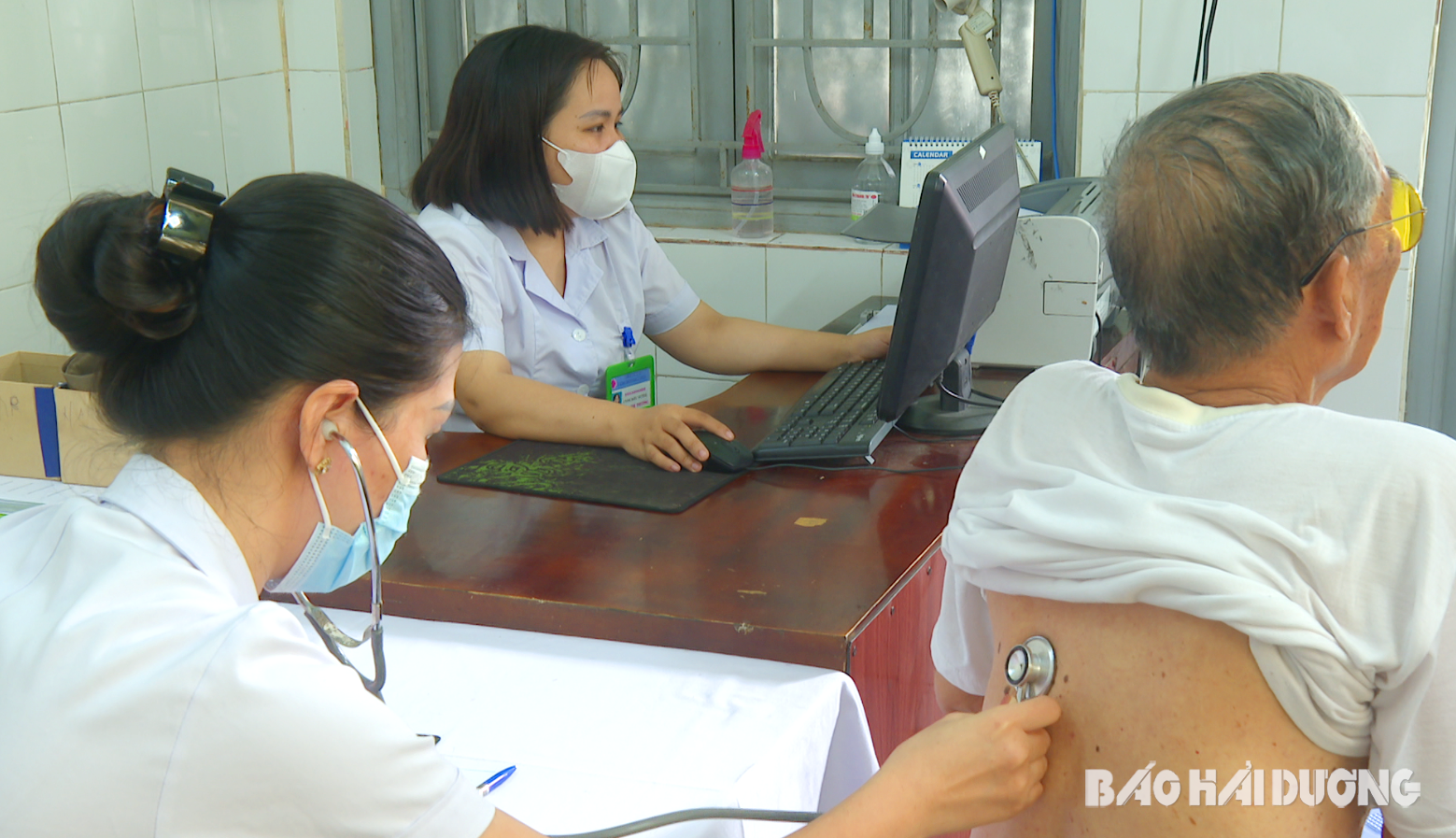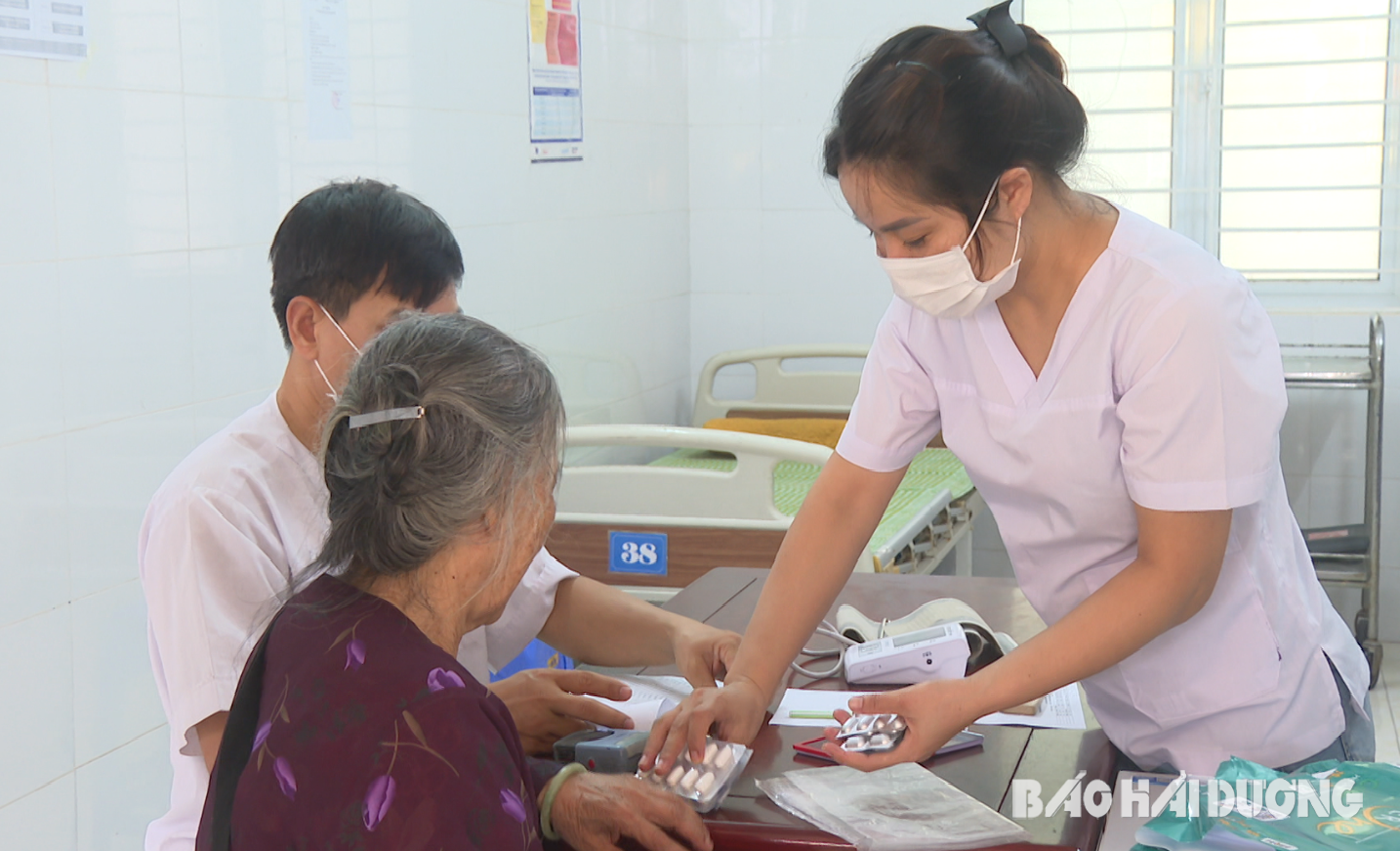Management, examination and treatment of non-communicable diseases at grassroots health facilities in Hai Duong have been strengthened but there are still many difficulties that need to be resolved.

From 2020-2023, the Provincial Center for Disease Control coordinated with medical units in the industry to examine over 1 million people, detect and manage 54,759 people with hypertension. Of which, medical centers managed and treated 21,277 people. There were 33,482 people treated at health stations.
Along with that, medical centers also examined and screened for diabetes for 767,921 people aged 40 and over, detecting over 16,000 new infections, bringing the total number of people with the disease under management to 31,720.
Medical centers in the province all have clinics and treatment rooms for hypertension and diabetes, but they are currently facing many difficulties such as: old and outdated facilities and equipment... Many places still lack basic equipment such as: blood sugar testing machines, capillary blood sugar testing machines. Officers in charge of non-communicable disease prevention programs at medical centers and health stations often change their positions, so they cannot promptly respond to assigned tasks. Many health stations do not have doctors, so the management and treatment of some of the above non-communicable diseases are facing many difficulties. The work of statistics and reporting on the prevention of some non-communicable diseases is still inadequate.
Cam Giang district has 8,455 people suffering from non-communicable diseases, mainly hypertension. Doctor Ha Van Dat, Deputy Head of the Department of Public Health - Nutrition - Food Safety and Hygiene (Cam Giang District Medical Center) said that the whole district only has 11/17 medical stations with doctors directly managing and treating non-communicable diseases. Many people do not trust the expertise, equipment and drugs for treating non-communicable diseases at medical stations, so management and treatment at the grassroots level is not easy.

Binh Giang district has 16 health stations, but currently only 7 stations have doctors. 5 health stations in Binh Minh, Thai Hoc, Tan Viet, Tan Hong communes and Ke Sat town are not covered by health insurance, so the management of non-communicable diseases is difficult. Doctor Le Thi Tan, Deputy Director of the District Health Center, shared: "The Center is directing functional departments to review human resources, especially doctors, to dispatch to health stations to examine and manage non-communicable diseases, contributing to reducing the burden on upper-level health facilities."
Currently, the remuneration and salary for primary health care workers are still low, not motivating them. Many diabetic patients who have been treated stably at health centers do not want to return to health stations for treatment.
A representative of the Provincial Center for Disease Control said that in order to effectively manage non-communicable diseases at the grassroots level, it is necessary to strengthen professional training and coaching, especially for full-time staff. Medical staff need to clearly understand the regulations on the management and treatment of non-communicable diseases at health stations to make payments in accordance with regulations. The Department of Health is interested in investing in and upgrading facilities and equipment for professional services according to standards for grassroots health. Social insurance can study to reduce procedures to suit the commune level, creating favorable conditions for people to quickly access services at grassroots health facilities...
By 2024, the health sector strives for 95% of health stations to implement preventive activities and early detection of non-communicable disease risks; 97% of health stations to treat hypertension and diabetes and some other non-communicable diseases to reach 75% or more... To achieve these goals, the above difficulties and problems in grassroots health care need to be promptly overcome.
DUC THANH